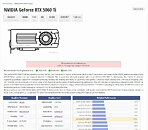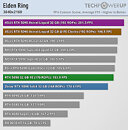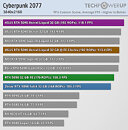
NVIDIA GeForce RTX 5060 Ti & 5060 128-bit Memory Interfaces "Confirmed" by Leaked Shipping Manifest
Last month, PG152 board designs were linked to NVIDIA's rumored lineup of upcoming GeForce RTX 5060 Ti, RTX 5060, and RTX 5050 "Blackwell" GPUs. Despite the emergence of fairly legitimate looking "incomplete" technical information, claimed "128-bit memory bus" spec points (for all lower end cards) did not sit well with a portion of the PC gaming hardware community. In theory, Team Green could roll out truly next-generation budget offerings with 192-bit buses, rather than repeat some of its GeForce RTX 4060 "Ada Lovelace" series homework. Two weeks ago, a GeForce RTX 5060 Ti-specific "full specification" leak reiterated the design's (alleged) 128-bit wide GDDR7 memory interface.
Earlier today, VideoCardz unearthed another example—sourced from shipping manifests—of NVIDIA outfitting PG152 boards with a 128-bit memory bus. The "PG152 SKU 25" and "PG152 SKU 10" identifiers seem to confirm the existence of GeForce RTX 5060 and GeForce RTX 5060 Ti graphics cards (respectively)—the latter design is reportedly due for launch next week. The "wallet friendly" end of Team Green's "Blackwell" GPU spectrum is expected to utilize GDDR7 memory; thus elevating new-gen options above preceding hardware. An advantageous generational leap grants bandwidths of 448.0 GB/s, rather than 288.0 GB/s.
Earlier today, VideoCardz unearthed another example—sourced from shipping manifests—of NVIDIA outfitting PG152 boards with a 128-bit memory bus. The "PG152 SKU 25" and "PG152 SKU 10" identifiers seem to confirm the existence of GeForce RTX 5060 and GeForce RTX 5060 Ti graphics cards (respectively)—the latter design is reportedly due for launch next week. The "wallet friendly" end of Team Green's "Blackwell" GPU spectrum is expected to utilize GDDR7 memory; thus elevating new-gen options above preceding hardware. An advantageous generational leap grants bandwidths of 448.0 GB/s, rather than 288.0 GB/s.
























































































